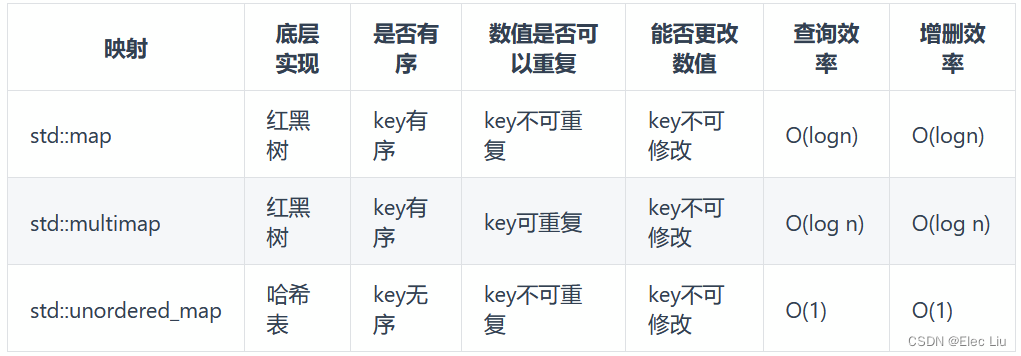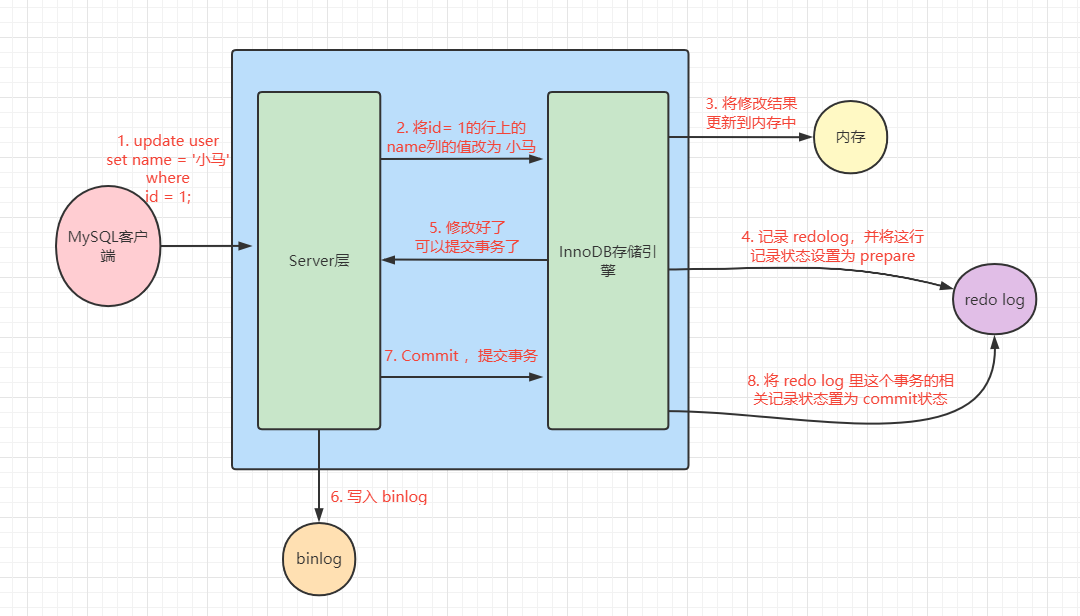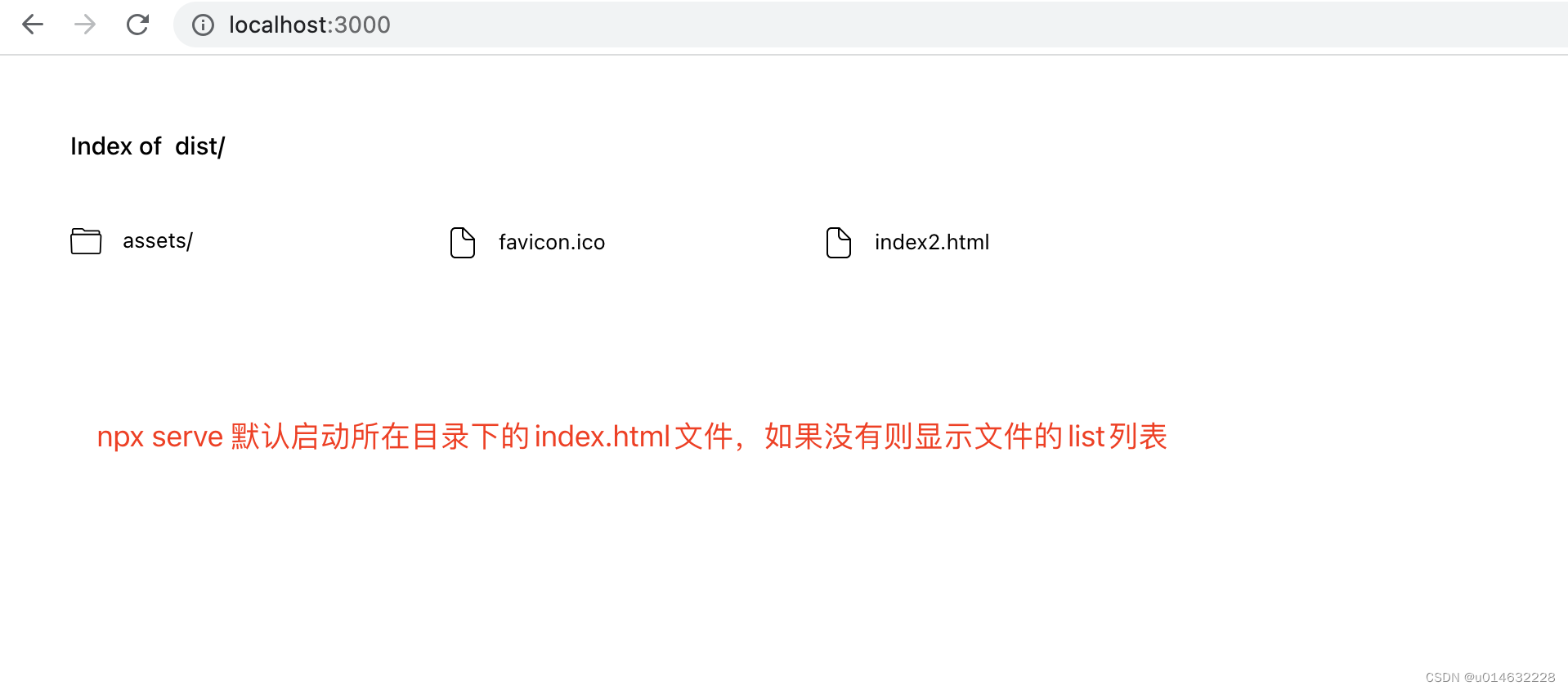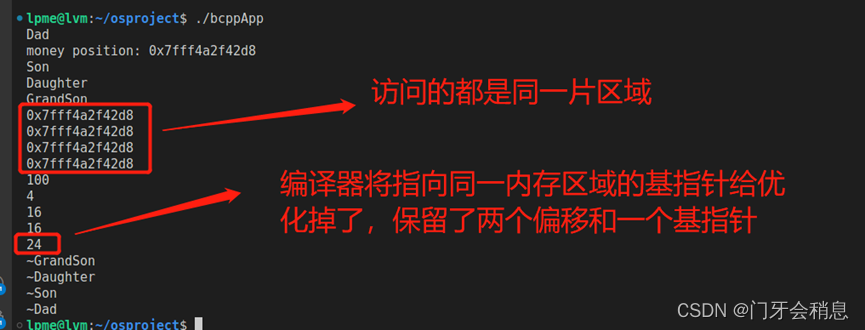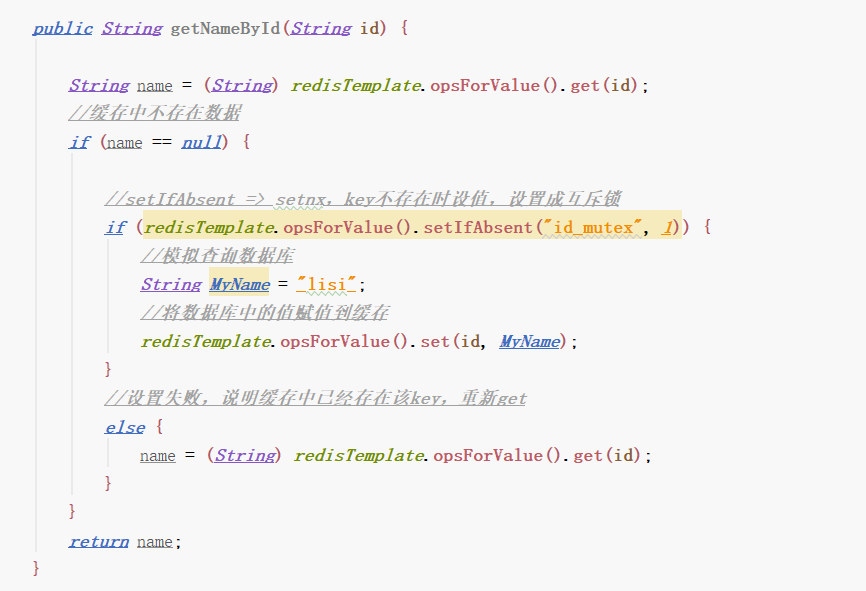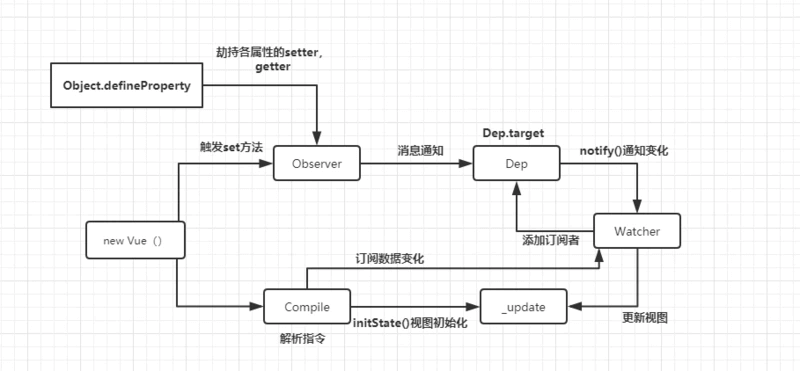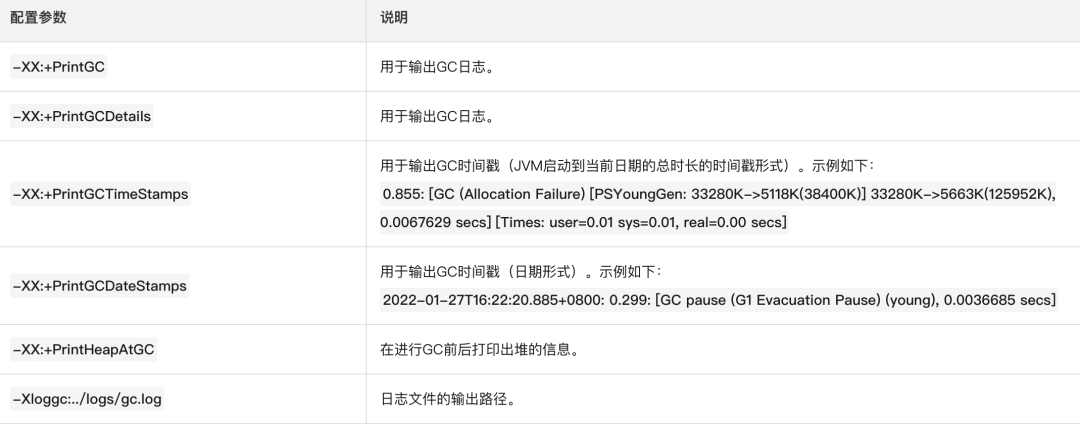
系列文章目录
Linux 内核设计与实现
深入理解 Linux 内核
Linux 设备驱动程序
Linux设备驱动开发详解
深入理解Linux虚拟内存管理(一)
深入理解Linux虚拟内存管理(二)
深入理解Linux虚拟内存管理(三)
深入理解Linux虚拟内存管理(四)
深入理解Linux虚拟内存管理(五)
深入理解Linux虚拟内存管理(六)
深入理解Linux虚拟内存管理(七)
深入理解Linux虚拟内存管理(八)
深入理解Linux虚拟内存管理(九)
文章目录
- 系列文章目录
- 一、共享内存虚拟文件系统
- 1、初始化 shmfs
- (1)init_tmpfs
- ① ⇐ DECLARE_FSTYPE
- ② ⟺ register_filesystem
- ③ ⟺ kern_mount
- ④ ⇒ shmem_set_size
- (2)shmem_read_super
- ① ⇐ SHMEM_SB
- ② ⇒ shmem_get_inode
- ③ ⇔ d_alloc_root
- (3)shmem_set_size
- 2、在 tmpfs 中创建文件
- (1)shmem_create
- (2)shmem_mknod
- ① ⇒ shmem_get_inode
- ② ⇔ d_instantiate
- (3)shmem_get_inode
- ① ⇔ new_inode
- ② ⇔ init_special_inode
- ③ ⇐ shmem_aops、shmem_file_operations
- ④ ⇐ dcache_dir_ops
- 3、tmpfs 中的文件操作
- (1)内存映射
- ① shmem_mmap
- ⑴ ⇒ shmem_nopage
- (2)读取文件
- ① shmem_file_read
- ⑴ ⇐ read_descriptor_t
- ⑵ ⇒ do_shmem_file_read
- ② do_shmem_file_read
- ⑴ ⇒ file_read_actor
- ⑵ ⇒ shmem_getpage
- ③ file_read_actor
- (3)写入文件
- ① shmem_file_write
- (4)符号链接
- ① shmem_symlink
- ② shmem_readlink_inline
- ③ shmem_follow_link_inline
- ④ shmem_readlink
- (5)同步文件
- ① shmem_sync_file
- 4、tmpfs 中的索引节点操作
- (1)截取
- ① shmem_truncate
- ② shmem_truncate_indirect
- ③ shmem_truncate_direct
- ④ shmem_free_swp
- (2)链接
- ① shmem_link
- (3)解除链接
- ① shmem_unlink
- (4)创建目录
- ① shmem_mkdir
- (5)移除目录
- ① shmem_rmdir
- ② shmem_empty
- ③ shmem_positive
- 5、虚拟文件中的缺页中断
- (1)缺页中断时读取页面
- ① shmem_nopage
- ② shmem_getpage
- (2)定位交换页面
- ① shmem_alloc_entry
- ② shmem_swp_entry
- 6、交换空间交互
- (1)shmem_writepage
- (2)shmem_unuse
- (3)shmem_unuse_inode
- (4)shmem_find_swp
- 7、建立共享区
- (1)shmem_zero_setup
- (2)shmem_file_setup
- 8、System V IPC
- (1)创建一个 SYSV 共享区
- ① sys_shmget
- ② newseg
- (2)附属一个 SYSV 共享区
- ① sys_shmat
- 符号
一、共享内存虚拟文件系统
1、初始化 shmfs
(1)init_tmpfs
这个函数用于注册和挂载 tmpfs 及 shmemfs 文件系统。
// mm/shmem.c
// shm文件系统只有在编译时定义CONFIG_TMPFS的情况下可以挂载。即使没有
// 指定,也会因 fork() 而为匿名共享内存建立tmpfs。
#ifdef CONFIG_TMPFS
/* type "shm" will be tagged obsolete in 2.5 */
// 声明在文件 <linux/fs.h> 中的 DECLARE_FSTYPE(), 声明了 tmpfs_fs_type 是
// struct file_system_type, 并填充了 4 个字段。"tmpfs" 是它的可读名字。shmem_read_super()
// 函数用于为文件系统读取超级块(超级块的细节以及它们如何匹配文件系统已经超出本书范
// 畴)。FS_LITTER 是一个标志位,用于表明应该在 dcache 中维护文件系统树。最后,这个宏
// 设置文件系统的模块所有者成为载入文件系统的模块。
static DECLARE_FSTYPE(shmem_fs_type, "shm", shmem_read_super, FS_LITTER);
static DECLARE_FSTYPE(tmpfs_fs_type, "tmpfs", shmem_read_super, FS_LITTER);
#else
static DECLARE_FSTYPE(tmpfs_fs_type, "tmpfs", shmem_read_super, FS_LITTER|FS_NOMOUNT);
#endif
static struct vfsmount *shm_mnt;
// __init 放置该函数在初始化部分。这意味着,内核启动完毕后,这个函数的代码将被移除。
static int __init init_tmpfs(void)
{
int error;
// 注册文件系统为tmpfs_fs_type类型,这已在第1433行进行了声明。如果失
// 败,跳转到 out3, 返回适当的错误。
error = register_filesystem(&tmpfs_fs_type);
if (error) {
printk(KERN_ERR "Could not register tmpfs\n");
goto out3;
}
// 如果在配置时指定了 tmpfs ,那么注册shmem文件系统。如果失败,跳转到
// out2, 解除tmpfs_fs_type的注册并返回错误。
#ifdef CONFIG_TMPFS
error = register_filesystem(&shmem_fs_type);
if (error) {
printk(KERN_ERR "Could not register shm fs\n");
goto out2;
}
// 如果由设备文件系统(devfs)管理/dev/,则创建一个新的shm目录。如果内核没有
// 使用devfs,则系统管理员必须手工创建该目录。
devfs_mk_dir(NULL, "shm", NULL);
#endif
// kern_mount()在内部挂载一个文件系统。换言之,该文件系统被挂载并被激活,但
// 在VFS中不被任何用户可见。其挂载点是shm_mnt,位于shmem.c文件中,其类型是
// struct vfsmount。 在后期需要搜索文件系统并卸载这个变量。
shm_mnt = kern_mount(&tmpfs_fs_type);
// 确保正确地卸载文件系统, 但是如果没有,则跳转到out1, 解除文件系统的注
// 册, 并返回错误。
if (IS_ERR(shm_mnt)) {
error = PTR_ERR(shm_mnt);
printk(KERN_ERR "Could not kern_mount tmpfs\n");
goto out1;
}
/* The internal instance should not do size checking */
// 函数shmem_set_size() (见L. 1. 3小节)用于设置文件系统中创建的块数及索引节
// 点数的最大值。
shmem_set_size(SHMEM_SB(shm_mnt->mnt_sb), ULONG_MAX, ULONG_MAX);
return 0;
out1:
#ifdef CONFIG_TMPFS
unregister_filesystem(&shmem_fs_type);
out2:
#endif
unregister_filesystem(&tmpfs_fs_type);
out3:
shm_mnt = ERR_PTR(error);
return error;
}
// 在这种情况下,module_init()表明了在载入模块上应当调用init_shmem_fs()以及
// 如何直接编译进内核,在系统启动时调用这个函数。
module_init(init_tmpfs)
① ⇐ DECLARE_FSTYPE
// include/linux/fs.h
struct file_system_type {
const char *name;
int fs_flags;
struct super_block *(*read_super) (struct super_block *, void *, int);
struct module *owner;
struct file_system_type * next;
struct list_head fs_supers;
};
#define DECLARE_FSTYPE(var,type,read,flags) \
struct file_system_type var = { \
name: type, \
read_super: read, \
fs_flags: flags, \
owner: THIS_MODULE, \
}
② ⟺ register_filesystem
// fs/super.c
/**
* register_filesystem - register a new filesystem
* @fs: the file system structure
*
* Adds the file system passed to the list of file systems the kernel
* is aware of for mount and other syscalls. Returns 0 on success,
* or a negative errno code on an error.
*
* The &struct file_system_type that is passed is linked into the kernel
* structures and must not be freed until the file system has been
* unregistered.
*/
int register_filesystem(struct file_system_type * fs)
{
int res = 0;
struct file_system_type ** p;
if (!fs)
return -EINVAL;
if (fs->next)
return -EBUSY;
INIT_LIST_HEAD(&fs->fs_supers);
write_lock(&file_systems_lock);
p = find_filesystem(fs->name);
if (*p)
res = -EBUSY;
else
*p = fs;
write_unlock(&file_systems_lock);
return res;
}
③ ⟺ kern_mount
// fs/super.c
struct vfsmount *kern_mount(struct file_system_type *type)
{
return do_kern_mount(type->name, 0, (char *)type->name, NULL);
}
④ ⇒ shmem_set_size
shmem_set_size 函数
(2)shmem_read_super
这是文件系统提供的回调函数,用于读取超级块。对于普通的文件系统,这可以从磁盘读取细节信息,但是,由于这个文件系统基于 RAM ,相反它产生一个 struct super_block 。
// mm/shmem.c
// 参数如下所示:
// sb 是产生的超级块。
// data 包括了一些参数。
// silent 在这个函数中未使用。
static struct super_block *shmem_read_super(struct super_block *sb, void *data, int silent)
{
struct inode *inode;
struct dentry *root;
unsigned long blocks, inodes;
// 设置缺省模式,uid和gid。这些可能覆盖挂载选项中的参数。
int mode = S_IRWXUGO | S_ISVTX;
uid_t uid = current->fsuid;
gid_t gid = current->fsgid;
// 每个super_block 都允许具有一个特定文件系统的结构,该结构包括一个称为
// super_block->u 的联合结构。 宏SHMEM_SB()返回联合结构中所包含的
// struct shmem_sb_info。
struct shmem_sb_info *sbinfo = SHMEM_SB(sb);
struct sysinfo si;
/*
* Per default we only allow half of the physical ram per
* tmpfs instance
*/
// si_meminfo()产生struct sysinfo,包括了全部内存,可用内存和已用内存的统计数
// 据。这个函数在arch/i386/mm/init.c文件中进行了定义,它是架构相关的。
si_meminfo(&si);
// 缺省情况下,只允许文件系统消耗物理内存的一半。
blocks = inodes = si.totalram / 2;
// 如果tmpfs可用,这将解析挂载选项,并允许覆盖缺省值。
#ifdef CONFIG_TMPFS
if (shmem_parse_options(data, &mode, &uid, &gid, &blocks, &inodes))
return NULL;
#endif
// 获取锁保护的 sbinfo, 它是 super_block 中的 struct shmem_sb_info。
spin_lock_init(&sbinfo->stat_lock);
sbinfo->max_blocks = blocks;
sbinfo->free_blocks = blocks;
sbinfo->max_inodes = inodes;
sbinfo->free_inodes = inodes;
sb->s_maxbytes = SHMEM_MAX_BYTES;
sb->s_blocksize = PAGE_CACHE_SIZE;
sb->s_blocksize_bits = PAGE_CACHE_SHIFT;
// 产生sb和sbinfo字段。
sb->s_magic = TMPFS_MAGIC;
// shmem_ops是超级块结构的函数指针,用于重新挂载文件系统和删除索引节点。
sb->s_op = &shmem_ops;
// 这个块分配特定的索引节点,用于表示文件系统的根节点。
inode = shmem_get_inode(sb, S_IFDIR | mode, 0);
if (!inode)
return NULL;
// 设置新文件系统的根部 uid和 gid。
inode->i_uid = uid;
inode->i_gid = gid;
// 实现在 fs/dcache.c 中
root = d_alloc_root(inode);
if (!root) {
iput(inode);
return NULL;
}
// 设置根索引节点至 super_block 中。
sb->s_root = root;
// 返回产生的超级块。
return sb;
}
① ⇐ SHMEM_SB
// mm/shmem.c
#define SHMEM_SB(sb) (&sb->u.shmem_sb)
// include/linux/fs.h
struct super_block {
struct list_head s_list; /* Keep this first */
kdev_t s_dev;
unsigned long s_blocksize;
unsigned char s_blocksize_bits;
unsigned char s_dirt;
unsigned long long s_maxbytes; /* Max file size */
struct file_system_type *s_type;
struct super_operations *s_op;
struct dquot_operations *dq_op;
struct quotactl_ops *s_qcop;
unsigned long s_flags;
unsigned long s_magic;
struct dentry *s_root;
struct rw_semaphore s_umount;
struct semaphore s_lock;
int s_count;
atomic_t s_active;
struct list_head s_dirty; /* dirty inodes */
struct list_head s_locked_inodes;/* inodes being synced */
struct list_head s_files;
struct block_device *s_bdev;
struct list_head s_instances;
struct quota_info s_dquot; /* Diskquota specific options */
union {
struct minix_sb_info minix_sb;
struct ext2_sb_info ext2_sb;
struct ext3_sb_info ext3_sb;
struct hpfs_sb_info hpfs_sb;
struct ntfs_sb_info ntfs_sb;
struct msdos_sb_info msdos_sb;
struct isofs_sb_info isofs_sb;
struct nfs_sb_info nfs_sb;
struct sysv_sb_info sysv_sb;
struct affs_sb_info affs_sb;
struct ufs_sb_info ufs_sb;
struct efs_sb_info efs_sb;
struct shmem_sb_info shmem_sb;
struct romfs_sb_info romfs_sb;
struct smb_sb_info smbfs_sb;
struct hfs_sb_info hfs_sb;
struct adfs_sb_info adfs_sb;
struct qnx4_sb_info qnx4_sb;
struct reiserfs_sb_info reiserfs_sb;
struct bfs_sb_info bfs_sb;
struct udf_sb_info udf_sb;
struct ncp_sb_info ncpfs_sb;
struct usbdev_sb_info usbdevfs_sb;
struct jffs2_sb_info jffs2_sb;
struct cramfs_sb_info cramfs_sb;
void *generic_sbp;
} u;
/*
* The next field is for VFS *only*. No filesystems have any business
* even looking at it. You had been warned.
*/
struct semaphore s_vfs_rename_sem; /* Kludge */
/* The next field is used by knfsd when converting a (inode number based)
* file handle into a dentry. As it builds a path in the dcache tree from
* the bottom up, there may for a time be a subpath of dentrys which is not
* connected to the main tree. This semaphore ensure that there is only ever
* one such free path per filesystem. Note that unconnected files (or other
* non-directories) are allowed, but not unconnected diretories.
*/
struct semaphore s_nfsd_free_path_sem;
};
② ⇒ shmem_get_inode
shmem_get_inode 函数
③ ⇔ d_alloc_root
// fs/dcache.c
/**
* d_alloc_root - allocate root dentry
* @root_inode: inode to allocate the root for
*
* Allocate a root ("/") dentry for the inode given. The inode is
* instantiated and returned. %NULL is returned if there is insufficient
* memory or the inode passed is %NULL.
*/
struct dentry * d_alloc_root(struct inode * root_inode)
{
struct dentry *res = NULL;
if (root_inode) {
res = d_alloc(NULL, &(const struct qstr) { "/", 1, 0 });
if (res) {
res->d_sb = root_inode->i_sb;
res->d_parent = res;
d_instantiate(res, root_inode);
}
}
return res;
}
(3)shmem_set_size
这个函数更新文件系统中可用块和索引节点的数量。在文件系统挂载和卸载时进行设置。
// mm/shmem.c
// 这些参数描述了文件系统超级块的信息,块的最大数量(max_blocks)和索引节点的
// 最大数量(max_inodes)。
static int shmem_set_size(struct shmem_sb_info *info,
unsigned long max_blocks, unsigned long max_inodes)
{
int error;
unsigned long blocks, inodes;
// 锁定超级块信息自旋锁。
spin_lock(&info->stat_lock);
// 计算文件系统中当前使用的块数。在初始挂载时,这并不重要,然而,如果重新挂载
// 文件系统,该函数必须保证新的文件系统不会太小。
blocks = info->max_blocks - info->free_blocks;
// 计算当前使用的索引节点数。
inodes = info->max_inodes - info->free_inodes;
error = -EINVAL;
// 如果重新挂载的文件系统没有足够的块存放当前信息,则跳转到out,并返
// 回-EINVAL。
if (max_blocks < blocks)
goto out;
// 同样地,确保是否有足够的索引节点,否则返回-EINVAL
if (max_inodes < inodes)
goto out;
// 可以安全地挂载文件系统,因此这里设置error为0表示操作成功。
error = 0;
// 设置最大索引节点数和可用节点数。
info->max_blocks = max_blocks;
info->free_blocks = max_blocks - blocks;
info->max_inodes = max_inodes;
info->free_inodes = max_inodes - inodes;
out:
// 为文件系统超级块信息结构解锁。
spin_unlock(&info->stat_lock);
// 成功则返回0,否则返回-EINVAL。
return error;
}
2、在 tmpfs 中创建文件
(1)shmem_create
这是创建新文件时位于最顶层的函数。
// mm/shmem.c
// 参数如下所示:
// dir 是新文件创建时的目录索引节点。
// entry 是新文件创建时的目录节点。
// mode 是传递给开放系统调用的标志位。
static int shmem_create(struct inode *dir, struct dentry *dentry, int mode)
{
// 调用shmem_mknod() (见L. 2.2小节),并添加S_IFREG标志位到模式标志位,以
// 此创建一个常规文件。
return shmem_mknod(dir, dentry, mode | S_IFREG, 0);
}
(2)shmem_mknod
// mm/shmem.c
/*
* File creation. Allocate an inode, and we're done..
*/
static int shmem_mknod(struct inode *dir, struct dentry *dentry, int mode, int dev)
{
// 调用shmem_get_inode() (见L. 2. 3小节)创建一个新的索引节点。
struct inode *inode = shmem_get_inode(dir->i_sb, mode, dev);
int error = -ENOSPC;
// 如果成功创建索引节点,则更新目录统计数据并实例化新文件。
if (inode) {
// 更新目录的大小。
dir->i_size += BOGO_DIRENT_SIZE;
// 更新ctime和mtime字段。
dir->i_ctime = dir->i_mtime = CURRENT_TIME;
// 实例化索引节点。
d_instantiate(dentry, inode);
// 对目录项进行引用,以阻止在页面换出时意外地回收了目录项。
dget(dentry); /* Extra count - pin the dentry in core */
// 表明调用成功结束。
error = 0;
}
// 返回成功,否则返回-ENOSPC。
return error;
}
① ⇒ shmem_get_inode
shmem_get_inode 函数
② ⇔ d_instantiate
// fs/dcache.c
/**
* d_instantiate - fill in inode information for a dentry
* @entry: dentry to complete
* @inode: inode to attach to this dentry
*
* Fill in inode information in the entry.
*
* This turns negative dentries into productive full members
* of society.
*
* NOTE! This assumes that the inode count has been incremented
* (or otherwise set) by the caller to indicate that it is now
* in use by the dcache.
*/
void d_instantiate(struct dentry *entry, struct inode * inode)
{
if (!list_empty(&entry->d_alias)) BUG();
spin_lock(&dcache_lock);
if (inode)
list_add(&entry->d_alias, &inode->i_dentry);
entry->d_inode = inode;
spin_unlock(&dcache_lock);
}
(3)shmem_get_inode
// mm/shmem.c
// 这个函数用于更新空闲索引节点数,用new_inode()分配一个索引节点。
static struct inode *shmem_get_inode(struct super_block *sb, int mode, int dev)
{
struct inode *inode;
struct shmem_inode_info *info;
struct shmem_sb_info *sbinfo = SHMEM_SB(sb);
// 获取sbinfo自旋锁,因为它即将被更新。
spin_lock(&sbinfo->stat_lock);
// 确保有空闲的索引节点,如果没有,则返回NULL。
if (!sbinfo->free_inodes) {
spin_unlock(&sbinfo->stat_lock);
return NULL;
}
sbinfo->free_inodes--;
// 更新空闲索引节点计数并释放锁。
spin_unlock(&sbinfo->stat_lock);
// new_inode()处于文件系统层面,并在<linux/fs.h>中声明。它如何运作的详细情
// 况不在本文档讨论范围内,但其概要内容很简单。它从slab分配器中分配一个索引节点,并
// 将各字段赋予0,并根据超级块中的信息产生inode->i_sb,inode->i_dev和inode->i_blkbits。
// 实现在文件 fs/inode.c 中
inode = new_inode(sb);
// 如果创建成功则填充索引节点各字段。
if (inode) {
// 填充基本的索引节点信息。
inode->i_mode = mode;
inode->i_uid = current->fsuid;
inode->i_gid = current->fsgid;
inode->i_blksize = PAGE_CACHE_SIZE;
inode->i_blocks = 0;
inode->i_rdev = NODEV;
// 设置 address_space_operations 使用 shmem_aops,后者建立函数 shmem_writepage()
// (见 L. 6. 1小节)用于address_space的页面回写回调函数。
inode->i_mapping->a_ops = &shmem_aops;
// 填充更多的基本信息。
inode->i_atime = inode->i_mtime = inode->i_ctime = CURRENT_TIME;
info = SHMEM_I(inode);
info->inode = inode;
// 初始化索引节点的semaphore信号量和自旋锁。
spin_lock_init(&info->lock);
// 确定如何根据传入的模式信息填充剩余的字段。
switch (mode & S_IFMT) {
default:
// 在这种情况下,创建特定的索引节点。尤其是在挂载文件系统时和创建根索引节点时。
init_special_inode(inode, mode, dev);
break;
case S_IFREG:
// 为常规文件创建索引节点。这里主要考虑的问题是设置 inode->i_op 和 inode->i_fop
// 字段分别为 shmem_inode_operations 和 shmem_file_operations 。
inode->i_op = &shmem_inode_operations;
inode->i_fop = &shmem_file_operations;
spin_lock(&shmem_ilock);
list_add_tail(&info->list, &shmem_inodes);
spin_unlock(&shmem_ilock);
break;
case S_IFDIR:
// 为新目录创建索引节点。更新i_nlink和i_size字段以显示增加的文件数量和
// 目录大小。这里主要考虑的问题是设置 inode->i_op 和 inode->i_fop 字段分别为
// shmem_dir_inode_operations 和 dcache_dir_ops 。
inode->i_nlink++;
/* Some things misbehave if size == 0 on a directory */
inode->i_size = 2 * BOGO_DIRENT_SIZE;
inode->i_op = &shmem_dir_inode_operations;
inode->i_fop = &dcache_dir_ops;
break;
case S_IFLNK:
// 如果链接了文件, 由于它由父函数 shmem_link()操作, 因此它现在什么也不是
break;
}
}
// 返回新索引节点,如果没有创建则返回NULL。
return inode;
}
① ⇔ new_inode
// fs/inode.c
/**
* new_inode - obtain an inode
* @sb: superblock
*
* Allocates a new inode for given superblock.
*/
struct inode * new_inode(struct super_block *sb)
{
static unsigned long last_ino;
struct inode * inode;
spin_lock_prefetch(&inode_lock);
inode = alloc_inode(sb);
if (inode) {
spin_lock(&inode_lock);
inodes_stat.nr_inodes++;
list_add(&inode->i_list, &inode_in_use);
inode->i_ino = ++last_ino;
inode->i_state = 0;
spin_unlock(&inode_lock);
}
return inode;
}
② ⇔ init_special_inode
// fs/devices.c
void init_special_inode(struct inode *inode, umode_t mode, int rdev)
{
inode->i_mode = mode;
if (S_ISCHR(mode)) {
inode->i_fop = &def_chr_fops;
inode->i_rdev = to_kdev_t(rdev);
inode->i_cdev = cdget(rdev);
} else if (S_ISBLK(mode)) {
inode->i_fop = &def_blk_fops;
inode->i_rdev = to_kdev_t(rdev);
} else if (S_ISFIFO(mode))
inode->i_fop = &def_fifo_fops;
else if (S_ISSOCK(mode))
inode->i_fop = &bad_sock_fops;
else
printk(KERN_DEBUG "init_special_inode: bogus imode (%o)\n", mode);
}
③ ⇐ shmem_aops、shmem_file_operations
// mm/shmem.c
static struct address_space_operations shmem_aops = {
removepage: shmem_removepage,
writepage: shmem_writepage,
#ifdef CONFIG_TMPFS
readpage: shmem_readpage,
prepare_write: shmem_prepare_write,
commit_write: shmem_commit_write,
#endif
};
static struct file_operations shmem_file_operations = {
mmap: shmem_mmap,
#ifdef CONFIG_TMPFS
read: shmem_file_read,
write: shmem_file_write,
fsync: shmem_sync_file,
#endif
};
static struct inode_operations shmem_inode_operations = {
truncate: shmem_truncate,
setattr: shmem_notify_change,
};
static struct inode_operations shmem_dir_inode_operations = {
#ifdef CONFIG_TMPFS
create: shmem_create,
lookup: shmem_lookup,
link: shmem_link,
unlink: shmem_unlink,
symlink: shmem_symlink,
mkdir: shmem_mkdir,
rmdir: shmem_rmdir,
mknod: shmem_mknod,
rename: shmem_rename,
#endif
};
④ ⇐ dcache_dir_ops
// fs/readdir.c
struct file_operations dcache_dir_ops = {
open: dcache_dir_open,
release: dcache_dir_close,
llseek: dcache_dir_lseek,
read: generic_read_dir,
readdir: dcache_readdir,
fsync: dcache_dir_fsync,
};
3、tmpfs 中的文件操作
(1)内存映射
用于映射虚拟文件到内存。惟一要做的改变是更新 VMA 的 vm_operations_struct 字段使用异常的等价 shmfs 。
① shmem_mmap
// mm/shmem.c
static int shmem_mmap(struct file *file, struct vm_area_struct *vma)
{
struct vm_operations_struct *ops;
struct inode *inode = file->f_dentry->d_inode;
// 操作目前为虚拟文件系统所使用的vm_operations_struct。
ops = &shmem_vm_ops;
// 确保索引节点映射的是常规文件。如果不是,则返回-EACCESS。
if (!S_ISREG(inode->i_mode))
return -EACCES;
// 更新索引节点的atime,显示它是否已经被访问。
UPDATE_ATIME(inode);
// 更新vma->vm_ops,这样shmem_nopage() 可以用于处理映射中的缺页中断。
vma->vm_ops = ops;
return 0;
}
⑴ ⇒ shmem_nopage
shmem_nopage 函数
(2)读取文件
① shmem_file_read
这是读取 tmpfs 文件时所调用的位于最顶层的函数。
// mm/shmem.c
// 参数如下所示:
// filp 是指向被读取文件的指针。
// buf 是应当填充的缓冲区。
// count 是应当读取的字节数。
// ppos 是当前位置。
static ssize_t shmem_file_read(struct file *filp, char *buf, size_t count, loff_t *ppos)
{
read_descriptor_t desc;
// 计数不可能为负数。
if ((ssize_t) count < 0)
return -EINVAL;
// access_ok()确保安全地写count数量的字节到用户空间缓冲区。如果不能,
// 则返回-EFAULT。
if (!access_ok(VERIFY_WRITE, buf, count))
return -EFAULT;
if (!count)
return 0;
// 初始化 read_descriptor_t 结构,该结构最终传递给 file_read_actor()
// (见 L.3.2.3)
desc.written = 0;
desc.count = count;
desc.buf = buf;
desc.error = 0;
// 调用do_shmem_file_read()开始执行实际的读操作。
do_shmem_file_read(filp, ppos, &desc);
// 返回写到用户空间缓冲区的字节数。
if (desc.written)
return desc.written;
// 如果没有写任何东西, 而返回错误
return desc.error;
}
⑴ ⇐ read_descriptor_t
// include/linux/fs.h
/*
* "descriptor" for what we're up to with a read for sendfile().
* This allows us to use the same read code yet
* have multiple different users of the data that
* we read from a file.
*
* The simplest case just copies the data to user
* mode.
*/
typedef struct {
size_t written;
size_t count;
char * buf;
int error;
} read_descriptor_t;
⑵ ⇒ do_shmem_file_read
do_shmem_file_read 函数
② do_shmem_file_read
这个函数通过 shmem_getpage() 找回读取文件所需的页面数,并调 file_read_actor() 复制数据到用户空间。
// mm/shmem.c
static void do_shmem_file_read(struct file *filp, loff_t *ppos, read_descriptor_t *desc)
{
// 找回 inode 和使用 struct file 的 mapping。
struct inode *inode = filp->f_dentry->d_inode;
struct address_space *mapping = inode->i_mapping;
unsigned long index, offset;
// index是文件中包含数据的页面的索引。
index = *ppos >> PAGE_CACHE_SHIFT;
// offset是在当前被读取页面中的偏移量。
offset = *ppos & ~PAGE_CACHE_MASK;
// 循环直到读取完请求的字节数。nr 是当前页面中还需要读取的字节数。desc->count
// 初始为需要读取的字节数,并由file_read_actor()(见L. 3. 2. 3)减小。
for (;;) {
struct page *page = NULL;
unsigned long end_index, nr, ret;
// end_index是文件中最后页面的索引。当到达文件尾部时停止。
end_index = inode->i_size >> PAGE_CACHE_SHIFT;
// 当到达最后一个页面时,设置nr为当前页面中还需要读取的字节数。如果
// 文件指针在nr后面,则停止,因为没有更多的数据供读取。这有可能发生在文件被截断时的情况。
if (index > end_index)
break;
if (index == end_index) {
nr = inode->i_size & ~PAGE_CACHE_MASK;
if (nr <= offset)
break;
}
// shmem_getpage() (见L. 5.1. 2)查找被请求页在页面高速缓存,交换缓存中
// 的位置。如果错误发生,则记录错误到desc->error并返回。
desc->error = shmem_getpage(inode, index, &page, SGP_READ);
if (desc->error) {
if (desc->error == -EINVAL)
desc->error = 0;
break;
}
/*
* We must evaluate after, since reads (unlike writes)
* are called without i_sem protection against truncate
*/
// nr是页面中必须读取的字节数,因此初始化为一个页面的大小,这样就可以读取整
// 个页面。
nr = PAGE_CACHE_SIZE;
// 初始化end_index,它是文件中最后一个页面的索引
end_index = inode->i_size >> PAGE_CACHE_SHIFT;
// 如果是文件的最后一个页面,则更新nr为页面的字节数。如果nr当前在文
// 件尾部之后(可能发生在文件截取的情况),则释放页面的引用(由 shmem_getpage() 使用),并
// 退出循环。
if (index == end_index) {
nr = inode->i_size & ~PAGE_CACHE_MASK;
if (nr <= offset) {
page_cache_release(page);
break;
}
}
// 更新需要读取的字节数。请记得offset是在页面中当前的文件读取处。
nr -= offset;
// 如果读取的页面不是全局零页面,则需要注意调用 flush_dcache_page() 所引
// 起的别名混淆隐患。如果是第一次读取的页面或者仅仅发生 lseek() (f_reada是0),则用
// mark_page_accessed()标记页面被访问过。
if (page != ZERO_PAGE(0)) {
/*
* If users can be writing to this page using arbitrary
* virtual addresses, take care about potential aliasing
* before reading the page on the kernel side.
*/
if (mapping->i_mmap_shared != NULL)
flush_dcache_page(page);
/*
* Mark the page accessed if we read the
* beginning or we just did an lseek.
*/
if (!offset || !filp->f_reada)
mark_page_accessed(page);
}
/*
* Ok, we have the page, and it's up-to-date, so
* now we can copy it to user space...
*
* The actor routine returns how many bytes were actually used..
* NOTE! This may not be the same as how much of a user buffer
* we filled up (we may be padding etc), so we can only update
* "pos" here (the actor routine has to update the user buffer
* pointers and the remaining count).
*/
// 调用file_read_actor()(见L. 3. 2. 3)复制数据到用户空间。它返回复制的字节数,
// 并更新用户缓冲指针及剩下的计数。
ret = file_read_actor(desc, page, offset, nr);
// 更新页面中读取的偏移量。
offset += ret;
// 如果可能,移动索引至下一个页面。
index += offset >> PAGE_CACHE_SHIFT;
// 确保offset是页面中的偏移量。
offset &= ~PAGE_CACHE_MASK;
// 释放被复制页面的引用。该引用由shmem_getpage()使用。
page_cache_release(page);
// 如果已经读取完请求的字节数,则返回。
if (ret != nr || !desc->count)
break;
}
// 更新文件指针。
*ppos = ((loff_t) index << PAGE_CACHE_SHIFT) + offset;
// 允许文件预读。
filp->f_reada = 1;
// 更新inode的访问计数,因为它已经被读取。
UPDATE_ATIME(inode);
}
⑴ ⇒ file_read_actor
file_read_actor 函数
⑵ ⇒ shmem_getpage
shmem_getpage 函数
⇐ ⇒ ⇔ ⇆ ⇒ ⟺
①②③④⑤⑥⑦
⑴⑵⑶⑷⑸⑹⑺⑻⑼⑽⑿⒀⒁⒂⒃⒄⒅⒆⒇
③ file_read_actor
(3)写入文件
① shmem_file_write
(4)符号链接
① shmem_symlink
② shmem_readlink_inline
③ shmem_follow_link_inline
④ shmem_readlink
(5)同步文件
① shmem_sync_file
4、tmpfs 中的索引节点操作
(1)截取
① shmem_truncate
② shmem_truncate_indirect
③ shmem_truncate_direct
①②③④⑤⑥⑦⑧⑨⑩⑪⑫⑬⑭⑮⑯⑰⑱⑲⑳
④ shmem_free_swp
(2)链接
① shmem_link
(3)解除链接
① shmem_unlink
(4)创建目录
① shmem_mkdir
(5)移除目录
① shmem_rmdir
② shmem_empty
③ shmem_positive
5、虚拟文件中的缺页中断
(1)缺页中断时读取页面
① shmem_nopage
② shmem_getpage
(2)定位交换页面
① shmem_alloc_entry
② shmem_swp_entry
6、交换空间交互
(1)shmem_writepage
(2)shmem_unuse
(3)shmem_unuse_inode
(4)shmem_find_swp
7、建立共享区
(1)shmem_zero_setup
(2)shmem_file_setup
8、System V IPC
(1)创建一个 SYSV 共享区
① sys_shmget
② newseg
(2)附属一个 SYSV 共享区
① sys_shmat
符号
⇐ ⇒ ⇔ ⇆ ⇒ ⟺
①②③④⑤⑥⑦⑧⑨⑩⑪⑫⑬⑭⑮⑯⑰⑱⑲⑳㉑㉒㉓㉔㉕㉖㉗㉘㉙㉚㉛㉜㉝㉞㉟㊱㊲㊳㊴㊵㊶㊷㊸㊹㊺㊻㊼㊽㊾㊿
⑴⑵⑶⑷⑸⑹⑺⑻⑼⑽⑿⒀⒁⒂⒃⒄⒅⒆⒇
➊➋➌➍➎➏➐➑➒➓⓫⓬⓭⓮⓯⓰⓱⓲⓳⓴
⒜⒝⒞⒟⒠⒡⒢⒣⒤⒥⒦⒧⒨⒩⒪⒫⒬⒭⒮⒯⒰⒱⒲⒳⒴⒵
ⓐⓑⓒⓓⓔⓕⓖⓗⓘⓙⓚⓛⓜⓝⓞⓟⓠⓡⓢⓣⓤⓥⓦⓧⓨⓩ
ⒶⒷⒸⒹⒺⒻⒼⒽⒾⒿⓀⓁⓂⓃⓄⓅⓆⓇⓈⓉⓊⓋⓌⓍⓎⓏ
🅐🅑🅒🅓🅔🅕🅖🅗🅘🅙🅚🅛🅜🅝🅞🅟🅠🅡🅢🅣🅤🅥🅦🅧🅨🅩
123
y = x 2 + z 3 y = x^2 + z_3 y=x2+z3
y = x 2 + z 3 + a b + b a y = x^2 + z_3 + \frac {a}{b} + \sqrt[a]{b} y=x2+z3+ba+ab
y = x 2 + z 3 (1) y = x^2 + z^3 \tag{1} y=x2+z3(1)
